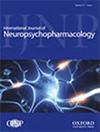Differential impact of adolescent or adult stress on behavior and cortical parvalbumin interneurons and perineuronal nets in male and female mice
IF 3.7
2区 医学
Q1 CLINICAL NEUROLOGY
引用次数: 0
Abstract
Background Stress has become a prevalent public health concern, contributing to the rising prevalence of psychiatric disorders. Understanding stress impact considering critical variables, such as age, sex, and individual differences, is of utmost importance for developing effective intervention strategies. Methods Stress effects (daily footshocks for ten days) during adolescence (postnatal day, PND31–40) and adulthood (PND65–74) were investigated on behavioral outcomes and parvalbumin (PV)-expressing GABAergic interneurons and their associated perineuronal nets (PNNs) in the prefrontal cortex (PFC) of male and female mice five weeks post-stress. Results In adulthood, adolescent stress induced behavioral alterations in male mice, including anxiety-like behaviors, social deficits, cognitive impairments, and altered dopamine system responsivity. Applying integrated behavioral z-score analysis, we identified sex-specific differences in response to adolescent stress, with males displaying greater vulnerability than females. Furthermore, adolescent-stressed male mice showed a decrease PV+ and PNN+ cell numbers and PV+/PNN+ colocalization, while in females, adolescent stress reduced prefrontal PV+/PNN+ colocalization in the PFC. Further analysis identified distinct behavioral clusters, with certain females demonstrating resilience to adolescent stress-induced deficits in sociability and PV+ cell number. Adult stress in male and female mice did not cause long-lasting changes in behavior and PV+ and PNN+ cell number. Conclusion Our findings indicate that the timing of stress, sex and individual variabilities seem to be determinants for the development of behavioral changes associated with psychiatric disorders, particularly in male mice during adolescence.青春期或成年期应激对雌雄小鼠行为、皮层副视蛋白中间神经元和神经元周围网的不同影响
背景 压力已成为一个普遍的公共健康问题,导致精神疾病的发病率不断上升。考虑到年龄、性别和个体差异等关键变量,了解压力的影响对于制定有效的干预策略至关重要。方法 研究了青春期(出生后31-40天,PND31-40)和成年期(PND65-74)应激对行为结果和雌雄小鼠应激后五周前额叶皮层(PFC)中表达GABA能的副神经元(PV)及其相关神经元周围网(PNN)的影响。结果 成年后,青春期应激会诱发雄性小鼠的行为改变,包括焦虑样行为、社交障碍、认知障碍和多巴胺系统反应性改变。通过综合行为Z-分数分析,我们发现了雄性小鼠对青春期应激反应的性别差异,雄性小鼠比雌性小鼠更容易受到青春期应激的影响。此外,青春期应激雄性小鼠的PV+和PNN+细胞数量以及PV+/PNN+共定位均有所减少,而雌性小鼠的青春期应激则减少了前额叶PFC中的PV+/PNN+共定位。进一步的分析发现了不同的行为集群,某些雌性小鼠对青春期应激诱导的交际能力和PV+细胞数量缺陷表现出恢复力。雄性和雌性小鼠的成年应激不会导致行为以及 PV+ 和 PNN+ 细胞数量的长期变化。结论 我们的研究结果表明,应激的时间、性别和个体差异似乎是与精神障碍相关的行为变化发展的决定因素,尤其是在青春期的雄性小鼠中。
本文章由计算机程序翻译,如有差异,请以英文原文为准。
求助全文
约1分钟内获得全文
求助全文
来源期刊
CiteScore
8.40
自引率
2.10%
发文量
230
审稿时长
4-8 weeks
期刊介绍:
The central focus of the journal is on research that advances understanding of existing and new neuropsychopharmacological agents including their mode of action and clinical application or provides insights into the biological basis of psychiatric disorders and thereby advances their pharmacological treatment. Such research may derive from the full spectrum of biological and psychological fields of inquiry encompassing classical and novel techniques in neuropsychopharmacology as well as strategies such as neuroimaging, genetics, psychoneuroendocrinology and neuropsychology.

 求助内容:
求助内容: 应助结果提醒方式:
应助结果提醒方式:


